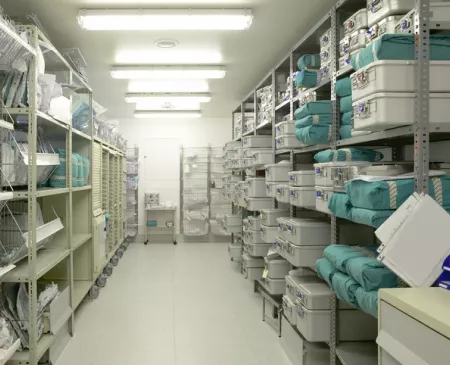The Buzz This Week:
Last month, a federal court ruled that the U.S. Department of Health and Human Services (HHS) must determine how to repay select participating covered entities in the 340B Drug Pricing Program after years of unlawful underpayments by the Centers for Medicare and Medicaid Services (CMS). Disproportionate share hospitals (DHSs), urban sole community hospitals, and rural referral centers were subject to these Medicare cuts that amounted to $1.6 billion. According to the American Hospital Association (AHA), HHS plans to propose a repayment plan by April. This announcement followed the U.S. Supreme Court decision in June 2022 that HHS cannot reduce payment rates for certain hospitals without first conducting a survey to determine drug acquisition costs.
The 340B Drug Pricing Program was created by Congress in 1992 to protect safety-net hospitals and other healthcare providers that serve low-income and uninsured patients from rising drug prices. Through this program, covered entities can purchase outpatient drugs at an average discount ranging from 25% to 50% from drug manufacturers participating in Medicaid. This allows safety-net providers to stretch their limited resources and provide additional benefits and services. In return, the drug companies receive coverage for their products under Medicaid or Medicare Part B.
Despite its good intentions, the 340B program has been beset with controversy and litigation in recent years. Drug companies claim there is limited program oversight by the Health Resources and Services Administration (HRSA, an agency within HHS). The program lacks transparency requirements as to how covered entities use funds generated by the program. And it has seen unparalleled program growth—both in the number of eligible providers and the volume of purchased drugs. The number of covered entities plus child sites participating in 340B increased from 8,100 to 50,000 between 2000 and 2020 due to eligibility expansion of entity types like critical access hospitals. In addition, the estimated discounted purchases totaled $38 billion in 2020, an increase of 27% from 2019.
As healthcare organizations were reeling from the impact of the pandemic in 2020, drug companies started to announce their intent to impose restrictions on when covered entities could use 340B discounts at contract pharmacies (external pharmacies that are owned or operated by third parties). Since 2020, more than 20 drug companies have imposed limits, with Bayer and EMD Serono being the latest to announce new program restrictions. As a result, the HRSA has taken enforcement action, asking for the 340B restrictions to be removed. In turn, drug companies filed federal lawsuits, and a federal appeals court recently ruled in favor of the drug companies, stating that “Congress never said that drug makers must deliver discounted Section 340B drugs to an unlimited number of contract pharmacies.”
Why It Matters:
By 2026, 340B is anticipated to be the largest federal prescription drug program when measured by the amount of money paid by patients and payers, surpassing Medicare Part D. For 3 decades, the 340B program has been a critical lifeline for the nation’s safety-net providers and low-income patients, but the program is at a crossroads as it needs greater transparency and accountability. As an example, there are concerns coming from policymakers and drug companies about how hospital participants are using the savings, as currently there aren’t stringent requirements documenting use of the savings and impact on vulnerable communities.
Though covered entities may still use the 340B program under drug companies’ new conditions, significant sources of funds have vanished, and new barriers exist to access discounts. A survey of more than 500 hospitals by 340B Health found “larger, mostly urban hospitals estimate their median loss from the restrictions at $2.2 million a year, and 10% of them expect their losses to exceed $21 million per year. Smaller, mostly rural hospitals often operating on razor-thin margins project a median loss of $448,000 a year, with 10% expecting more than $1.3 million in annual losses.”
At the time of the survey, 14 drug companies had imposed restrictions. The number has since grown, indicating that the financial impact now is even greater for 340B participants. This financial pressure can lead to reduction of services and closure of facilities—as 2022 proved to be the most difficult year financially for health systems since the pandemic began.
These new restrictions are also impacting vulnerable patients as they experience delayed access to medicine, financial barriers caused by higher bills, and worsened health outcomes. The main intentions of the 340B program are: (1) to reduce the financial burden of purchasing drugs at full cost for hospitals that have a disproportionate share of Medicaid patients or qualify in some other way, and (2) for the savings generated by the program to be invested back into these vulnerable communities. Reform to the 340B program can improve equity and maintain the program’s intent of serving vulnerable communities.
Related Links
American Hospital Association:
Fact Sheet: The 340B Drug Pricing Program
Healthcare Dive:
Hospitals Disappointed With Court Ruling Placing HHS in Charge of 340B Repayment
The Commonwealth Fund:
The Federal 340B Drug Pricing Program: What It Is, and Why It’s Facing Legal Challenges
USC Schaeffer:
The 340B Drug Pricing Program: Background, Ongoing Challenges and Recent Developments
Editorial advisor: Roger Ray, MD, Chief Physician Executive.







